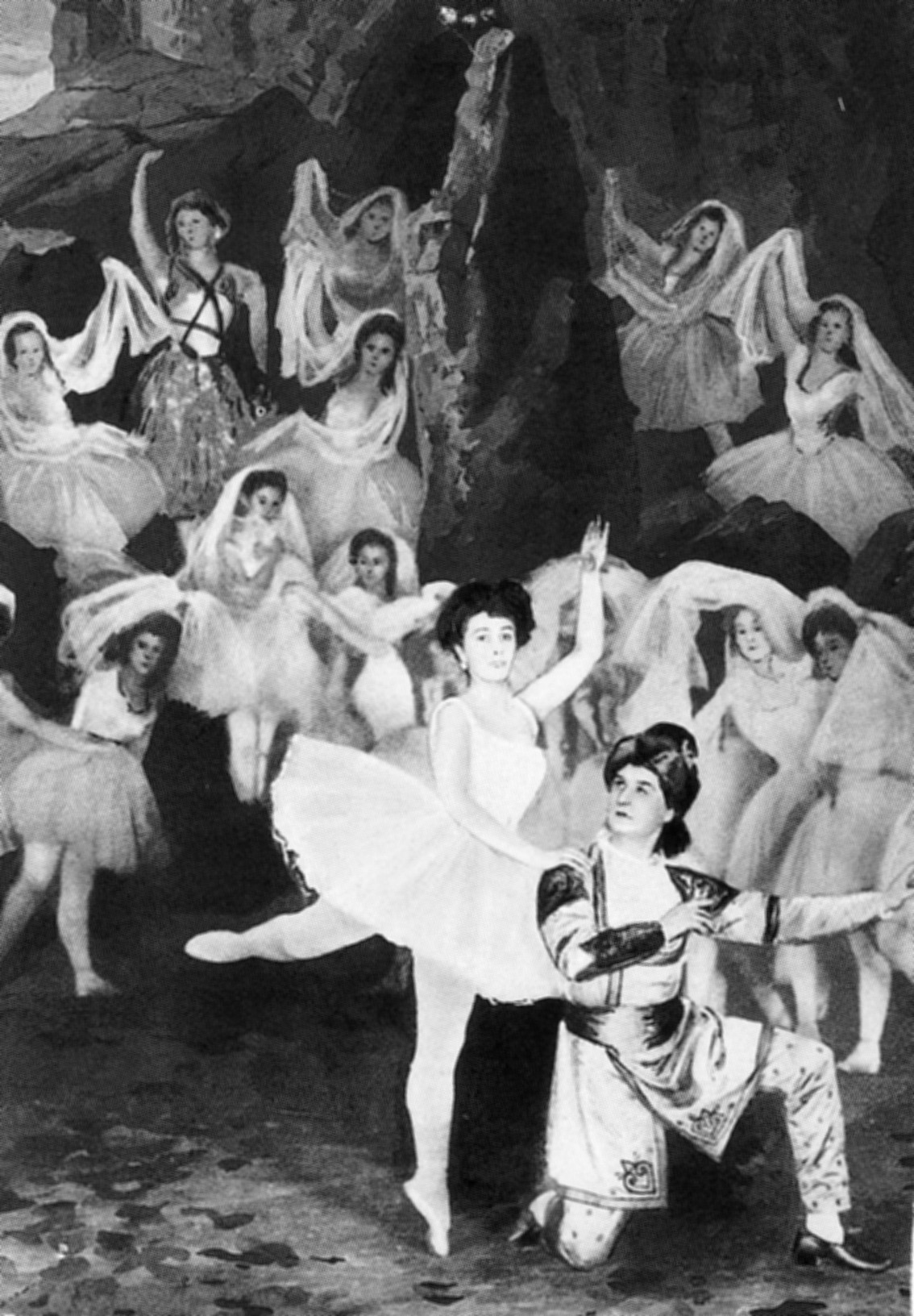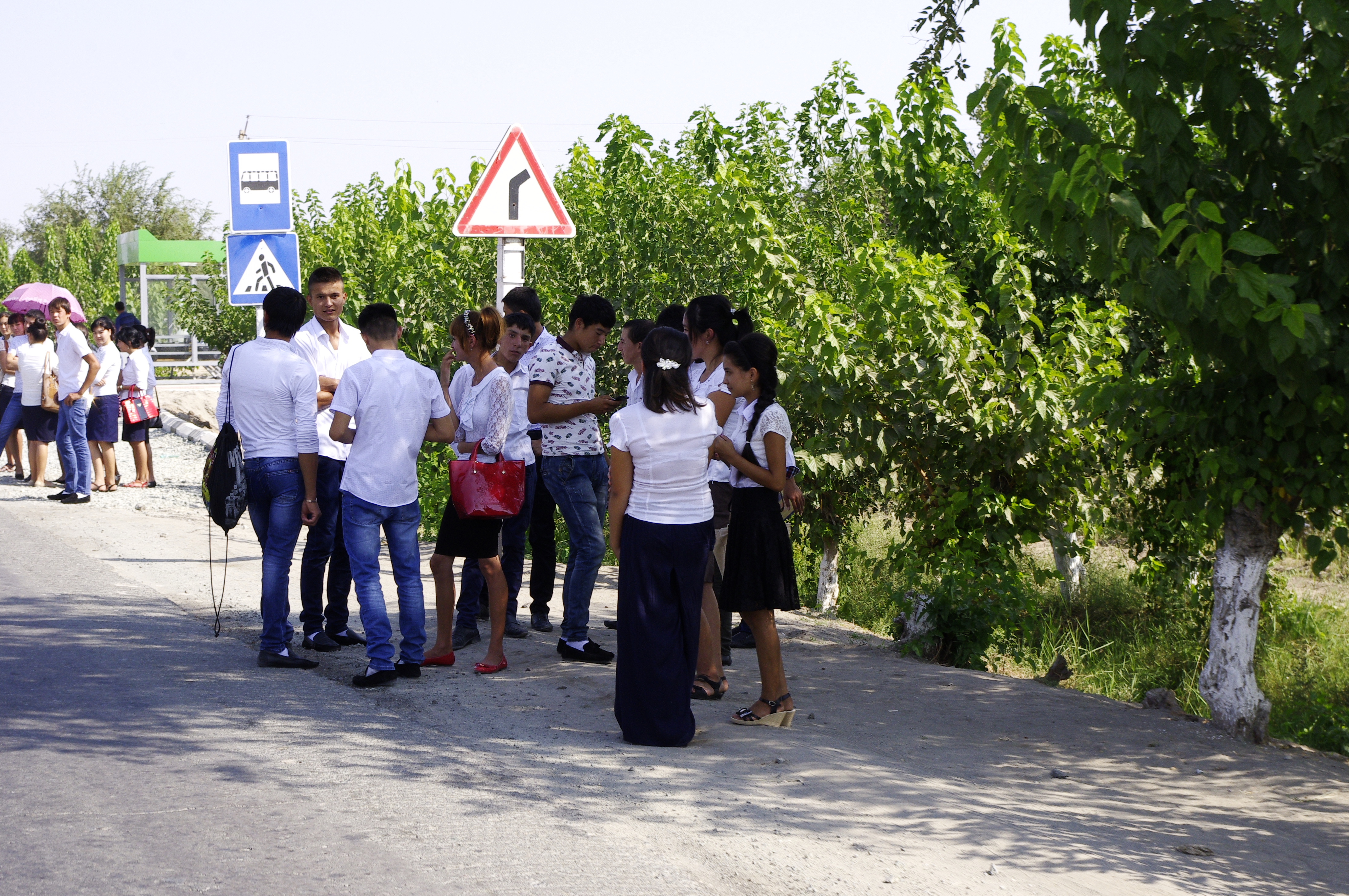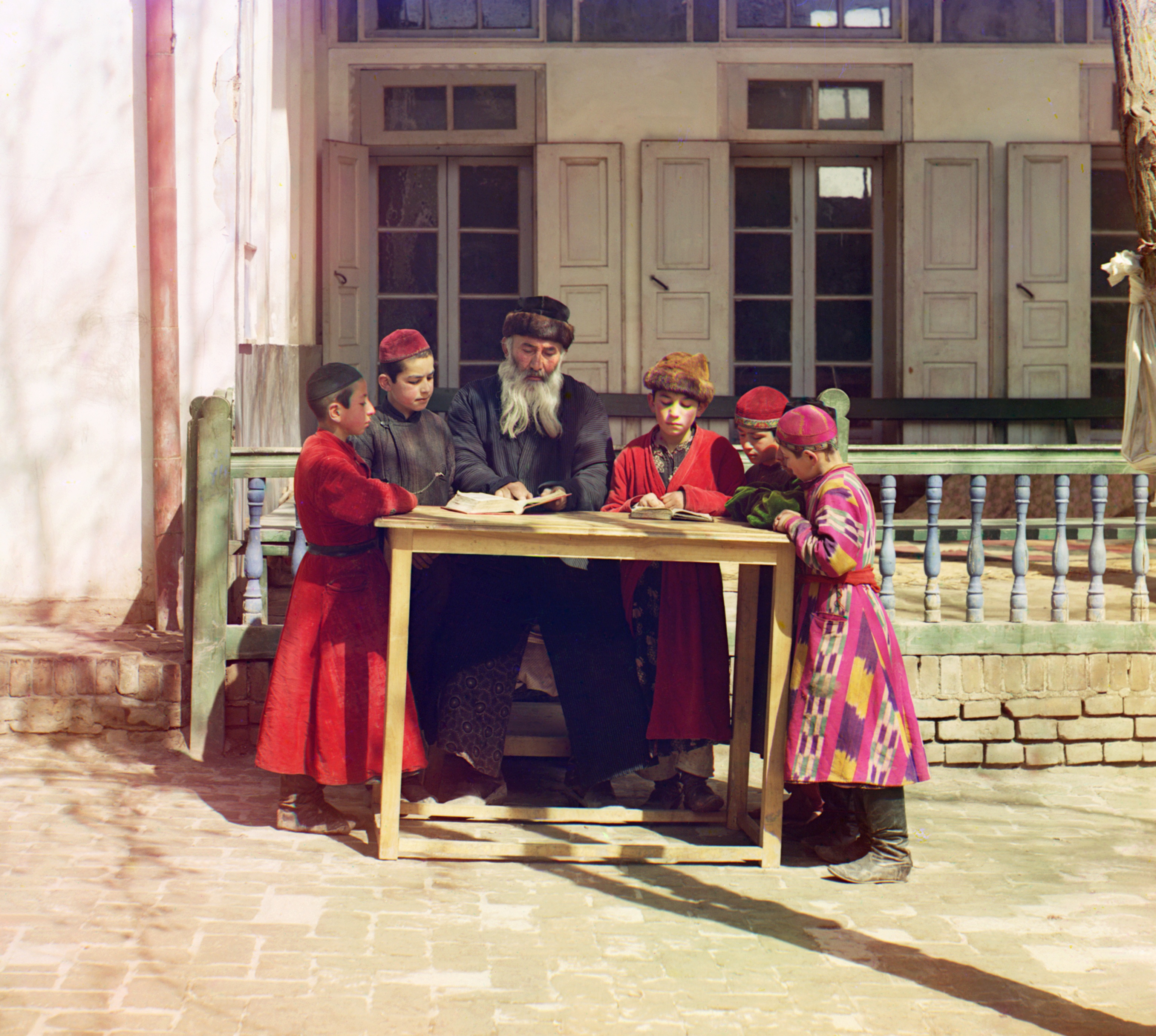|
Kunduz Mirkarimova
Kunduz Mirkarimova (8 March 1925, Tashkent – 11 June 2019, Tashkent) was an Uzbek dancer, choreographer and teacher, People's Artist of Uzbekistan (1966), People's Artist of the USSR (1984). Early life and education Kunduz Mirkarimova was born in 1925 or according to other sources in 1928 in Tashkent. From 1937 to 1941, she was educated at the Tamarakhonim Ballet School. In 1951, Mirkarimova graduated from the Moscow State Academy of Choreography in Moscow. Career From 1943 to 1946, Mirkarimova worked as a solo dancer at the Yangiyul Theater of Musical Drama and Comedy and from 1946 to 1949 at the Muqumi Theater. In 1951–1973, she danced at the Alisher Navoi Bolshoi Opera and Ballet Theater in Tashkent. From 1953 to 1956, Mirkarimova worked at the State Philharmonic of Uzbekistan. In 1957, Mirkarimova created an ensemble “Bakhor” (“Spring”). Since 1964, she started teaching choreography. She worked as a teacher-tutor of the ensemble until 1969. Since 1979, Mirk ... [...More Info...] [...Related Items...] OR: [Wikipedia] [Google] [Baidu] |
People's Artist Of The USSR
People's Artist of the USSR ( rus, Народный артист СССР, Narodny artist SSSR), also sometimes translated as National Artist of the USSR, was an honorary title granted to artists of the Soviet Union. Nomenclature and significance The term is confusingly used to translate two Russian language titles: Народный артист СССР (fem. Народная артистка СССР), awarded in performing arts and Народный художник СССР, granted in some visual arts. Each Soviet Republic, as well as the Autonomous Republics (ASSRs), had a similar award held previously by virtually every receiver of the higher title of People's Artist of the USSR. As this title was granted by the government, honorees were afforded certain privileges and would often receive commissions from the Minister of Culture of the Soviet Union. Accordingly, artists and authors who expressed criticism of the Communist Party were seldom granted such recognition, if ... [...More Info...] [...Related Items...] OR: [Wikipedia] [Google] [Baidu] |
Moscow State Academy Of Choreography
The Moscow State Academy of Choreography (russian: Московская государственная академия хореографии), commonly known as The Bolshoi Ballet Academy, is one of the oldest and most prestigious schools of ballet in the world, located in Moscow, Russia. It is the affiliate school of the Bolshoi Ballet. The Bolshoi Ballet receives the majority of its dancers from the academy, as do most other Moscow ballet companies. Numerous choreographers, instructors and graduates of the academy have become renowned, including Olga Lepeshinskaya, Raisa Struchkova, Natalia Bessmertnova, Ekaterina Maximova, Maya Plisetskaya, Nikolai Fadeyechev, Vladimir Vasiliev, Mikhail Lavrovsky, Nikolay Tsiskaridze, to be bestowed a People's Artist of the USSR, "prima ballerina assoluta" and "premier dancer", the ultimate title for a ballet performer of the Soviet Union. The academy was awarded the Japanese Foreign Minister’s Commendation for their contributions to pro ... [...More Info...] [...Related Items...] OR: [Wikipedia] [Google] [Baidu] |
Navoi Theater
The Navoi Theater ( uz, Alisher Navoiy nomidagi davlat akademik katta teatri, "Alisher Navoi State Academic Big Theatre") is the national opera theater in Tashkent, Uzbekistan. Overview In 1929, amateurs of concert-ethnographic group led by M. Kari-Yakubov was established and later founded the professional theatre. In 1939 it was renamed to the Uzbek State Opera and Ballet Theatre, and in March 1948 it was united with Russian theatre and called as the State Opera and Ballet Theatre named after Alisher Navoi. Later, in 1959 the theatre obtained the status of Academic theatre and in 1966 – the status of Bolshoi Theatre, Designed by Alexey Shchusev, the building of the theater was built in 1942-1947 and was opened to the public in November, 1947, celebrating the 500th anniversary of the birth of Alisher Navoi 'Ali-Shir Nava'i (9 February 1441 – 3 January 1501), also known as Nizām-al-Din ʿAli-Shir Herawī ( Chagatai: نظام الدین علی شیر نوایی, fa, ... [...More Info...] [...Related Items...] OR: [Wikipedia] [Google] [Baidu] |
1920s Births
Nineteen or 19 may refer to: * 19 (number), the natural number following 18 and preceding 20 * one of the years 19 BC, AD 19, 1919, 2019 Films * ''19'' (film), a 2001 Japanese film * ''Nineteen'' (film), a 1987 science fiction film Music * 19 (band), a Japanese pop music duo Albums * ''19'' (Adele album), 2008 * ''19'', a 2003 album by Alsou * ''19'', a 2006 album by Evan Yo * ''19'', a 2018 album by MHD * ''19'', one half of the double album ''63/19'' by Kool A.D. * ''Number Nineteen'', a 1971 album by American jazz pianist Mal Waldron * ''XIX'' (EP), a 2019 EP by 1the9 Songs * "19" (song), a 1985 song by British musician Paul Hardcastle. * "Nineteen", a song by Bad4Good from the 1992 album ''Refugee'' * "Nineteen", a song by Karma to Burn from the 2001 album ''Almost Heathen''. * "Nineteen" (song), a 2007 song by American singer Billy Ray Cyrus. * "Nineteen", a song by Tegan and Sara from the 2007 album '' The Con''. * "XIX" (song), a 2014 song by Slipkno ... [...More Info...] [...Related Items...] OR: [Wikipedia] [Google] [Baidu] |
2019 Deaths
This is a list of deaths of notable people, organised by year. New deaths articles are added to their respective month (e.g., Deaths in ) and then linked here. 2022 2021 2020 2019 2018 2017 2016 2015 2014 2013 2012 2011 2010 2009 2008 2007 2006 2005 2004 2003 2002 2001 2000 1999 1998 1997 1996 1995 1994 1993 1992 1991 1990 1989 1988 1987 See also * Lists of deaths by day The following pages, corresponding to the Gregorian calendar, list the historical events, births, deaths, and holidays and observances of the specified day of the year: Footnotes See also * Leap year * List of calendars * List of non-standard ... * Deaths by year {{DEFAULTSORT:deaths by year ... [...More Info...] [...Related Items...] OR: [Wikipedia] [Google] [Baidu] |
Dancers From Tashkent
Dance is a performing art form consisting of sequences of movement, either improvised or purposefully selected. This movement has aesthetic and often symbolic value. Dance can be categorized and described by its choreography, by its repertoire of movements, or by its historical period or place of origin. An important distinction is to be drawn between the contexts of theatrical and participatory dance, although these two categories are not always completely separate; both may have special functions, whether social, ceremonial, competitive, erotic, martial, or sacred/liturgical. Other forms of human movement are sometimes said to have a dance-like quality, including martial arts, gymnastics, cheerleading, figure skating, synchronized swimming, marching bands, and many other forms of athletics. There are many professional athletes like, professional football players and soccer players, who take dance classes to help with their skills. To be more specific professional athletes tak ... [...More Info...] [...Related Items...] OR: [Wikipedia] [Google] [Baidu] |
People's Artists Of The USSR
People's Artist of the USSR ( rus, Народный артист СССР, Narodny artist SSSR), also sometimes translated as National Artist of the USSR, was an honorary title granted to artists of the Soviet Union. Nomenclature and significance The term is confusingly used to translate two Russian language titles: Народный артист СССР (fem. Народная артистка СССР), awarded in performing arts and Народный художник СССР, granted in some visual arts. Each Soviet Republic, as well as the Autonomous Republics (ASSRs), had a similar award held previously by virtually every receiver of the higher title of People's Artist of the USSR. As this title was granted by the government, honorees were afforded certain privileges and would often receive commissions from the Minister of Culture of the Soviet Union. Accordingly, artists and authors who expressed criticism of the Communist Party were seldom granted such recognition, if ... [...More Info...] [...Related Items...] OR: [Wikipedia] [Google] [Baidu] |
Soviet Dancers
This is a list of ballet dancers from the Russian Empire, Soviet Union, and Russian Federation, including both ethnic Russians and people of other ethnicities. This list includes as well those who were born in these three states but later emigrated, and those who were born elsewhere but immigrated to the country and performed there for a significant portion of their careers. The original purpose of the ballet in Russia was to entertain the royal court. The first ballet company was the Imperial School of Ballet in St. Petersburg in the 1740s. The Ballets Russes was a ballet company founded in the 1909 by Sergey Diaghilev, an enormously important figure in the Russian ballet scene. Diaghilev and his Ballets Russes' travels abroad profoundly influenced the development of dance worldwide. The headquarters of his ballet company was located in Paris, France. A protégé of Diaghilev, George Balanchine, founded the New York City Ballet Company. During the early 20th century, many Russi ... [...More Info...] [...Related Items...] OR: [Wikipedia] [Google] [Baidu] |
Uzbekistani Female Dancers
The demographics of Uzbekistan are the demographic features of the population of Uzbekistan, including population growth, population density, ethnicity, education level, health, economic status, religious affiliations, and other aspects of the population. The nationality of any person from Uzbekistan is Uzbekistani, while the ethnic Uzbek majority call themselves Uzbeks. Much of the data is estimated because the last census was carried out in Soviet times in 1989. Demographic trends Uzbekistan is Central Asia's most populous country. Its 35 million people ( estimate) comprise nearly half the region's total population. The population of Uzbekistan is very young: 25.1% of its people are younger than 14. According to official sources, Uzbeks comprise a majority (84.4%) of the total population. Other ethnic groups, as of 1996 estimates, include Russians (5.5% of the population), Tajiks (5%), Kazakhs (3%), Karakalpaks (2.5%), and Tatars (1.5%).Uzbekistan iCIA World Factbook ... [...More Info...] [...Related Items...] OR: [Wikipedia] [Google] [Baidu] |
Uzbekistani Choreographers
The demographics of Uzbekistan are the demographic features of the population of Uzbekistan, including population growth, population density, ethnicity, education level, health, economic status, religious affiliations, and other aspects of the population. The nationality of any person from Uzbekistan is Uzbekistani, while the ethnic Uzbek majority call themselves Uzbeks. Much of the data is estimated because the last census was carried out in Soviet times in 1989. Demographic trends Uzbekistan is Central Asia's most populous country. Its 35 million people ( estimate) comprise nearly half the region's total population. The population of Uzbekistan is very young: 25.1% of its people are younger than 14. According to official sources, Uzbeks comprise a majority (84.4%) of the total population. Other ethnic groups, as of 1996 estimates, include Russians (5.5% of the population), Tajiks (5%), Kazakhs (3%), Karakalpaks (2.5%), and Tatars (1.5%).Uzbekistan iCIA World Factbook ... [...More Info...] [...Related Items...] OR: [Wikipedia] [Google] [Baidu] |
Uzbekistani Women Choreographers
The demographics of Uzbekistan are the demographic features of the population of Uzbekistan, including population growth, population density, ethnicity, education level, health, economic status, religious affiliations, and other aspects of the population. The nationality of any person from Uzbekistan is Uzbekistani, while the ethnic Uzbek majority call themselves Uzbeks. Much of the data is estimated because the last census was carried out in Soviet times in 1989. Demographic trends Uzbekistan is Central Asia's most populous country. Its 35 million people ( estimate) comprise nearly half the region's total population. The population of Uzbekistan is very young: 25.1% of its people are younger than 14. According to official sources, Uzbeks comprise a majority (84.4%) of the total population. Other ethnic groups, as of 1996 estimates, include Russians (5.5% of the population), Tajiks (5%), Kazakhs (3%), Karakalpaks (2.5%), and Tatars (1.5%).Uzbekistan iCIA World Factbook ... [...More Info...] [...Related Items...] OR: [Wikipedia] [Google] [Baidu] |



